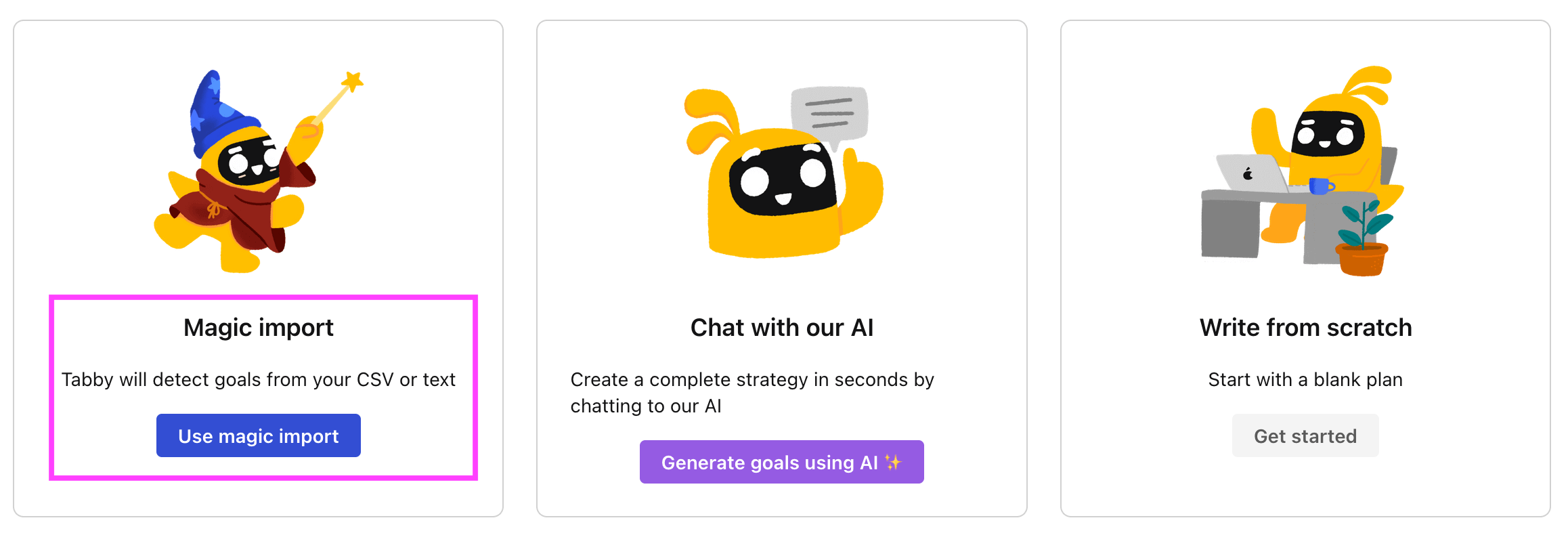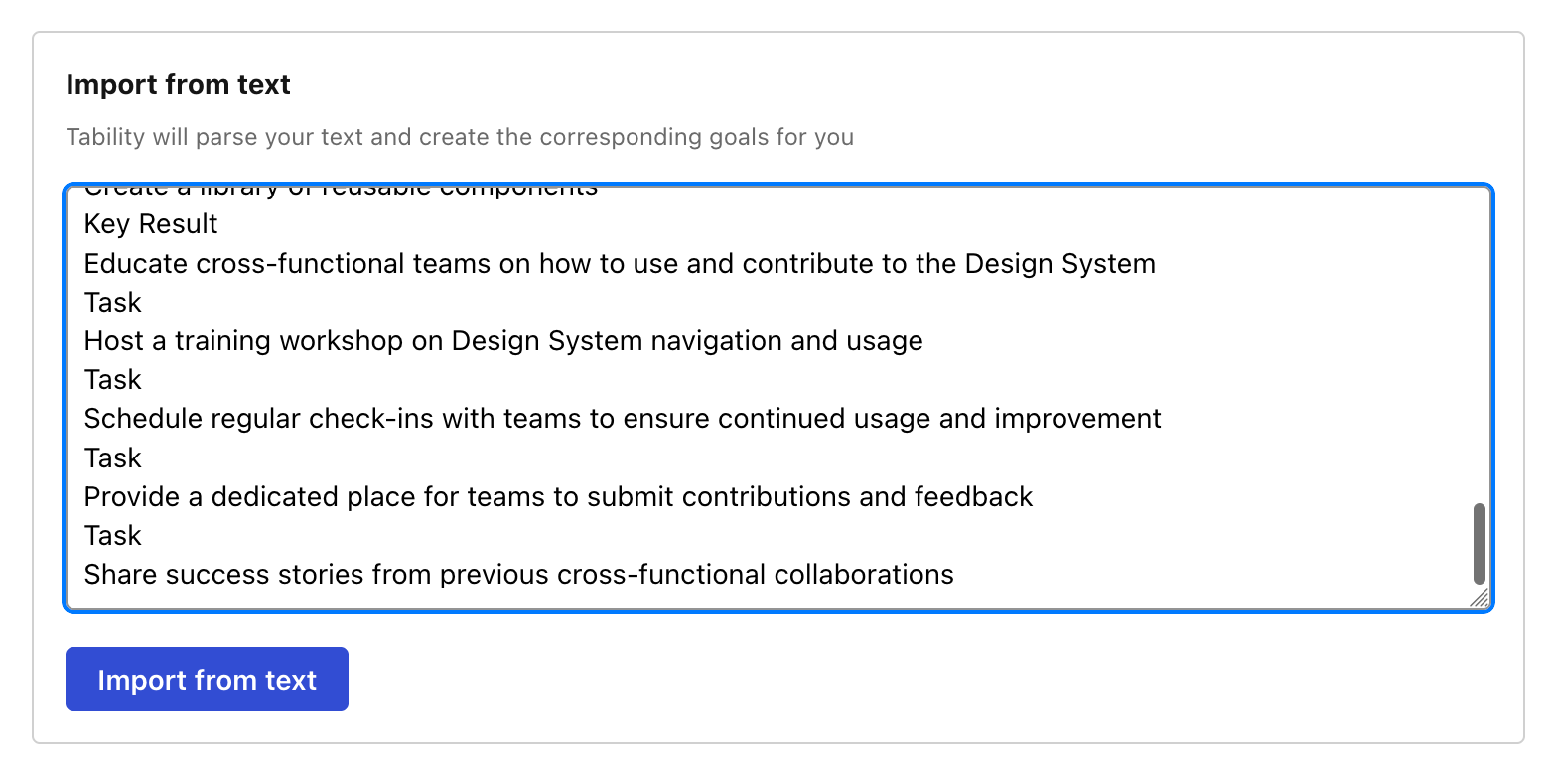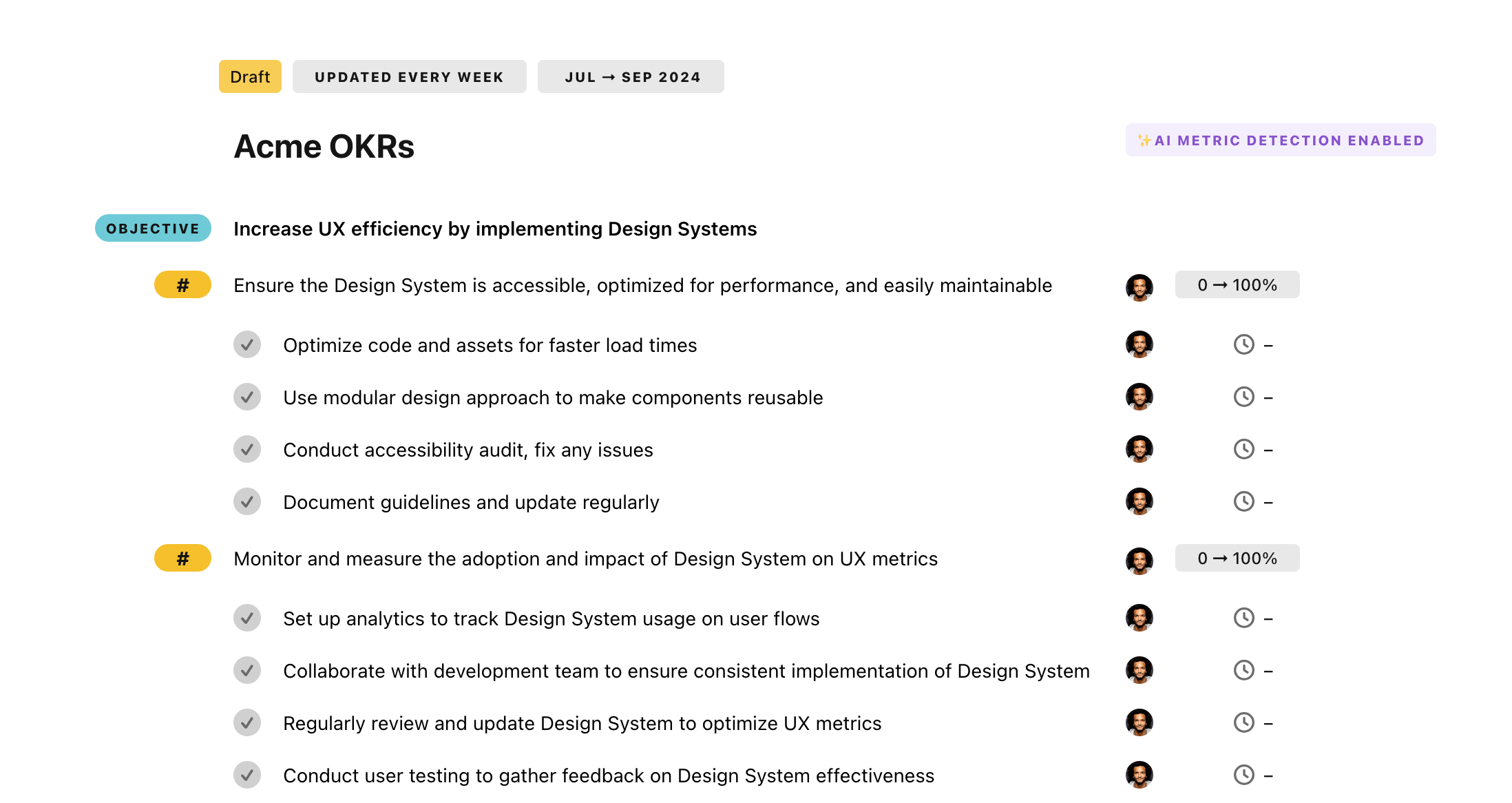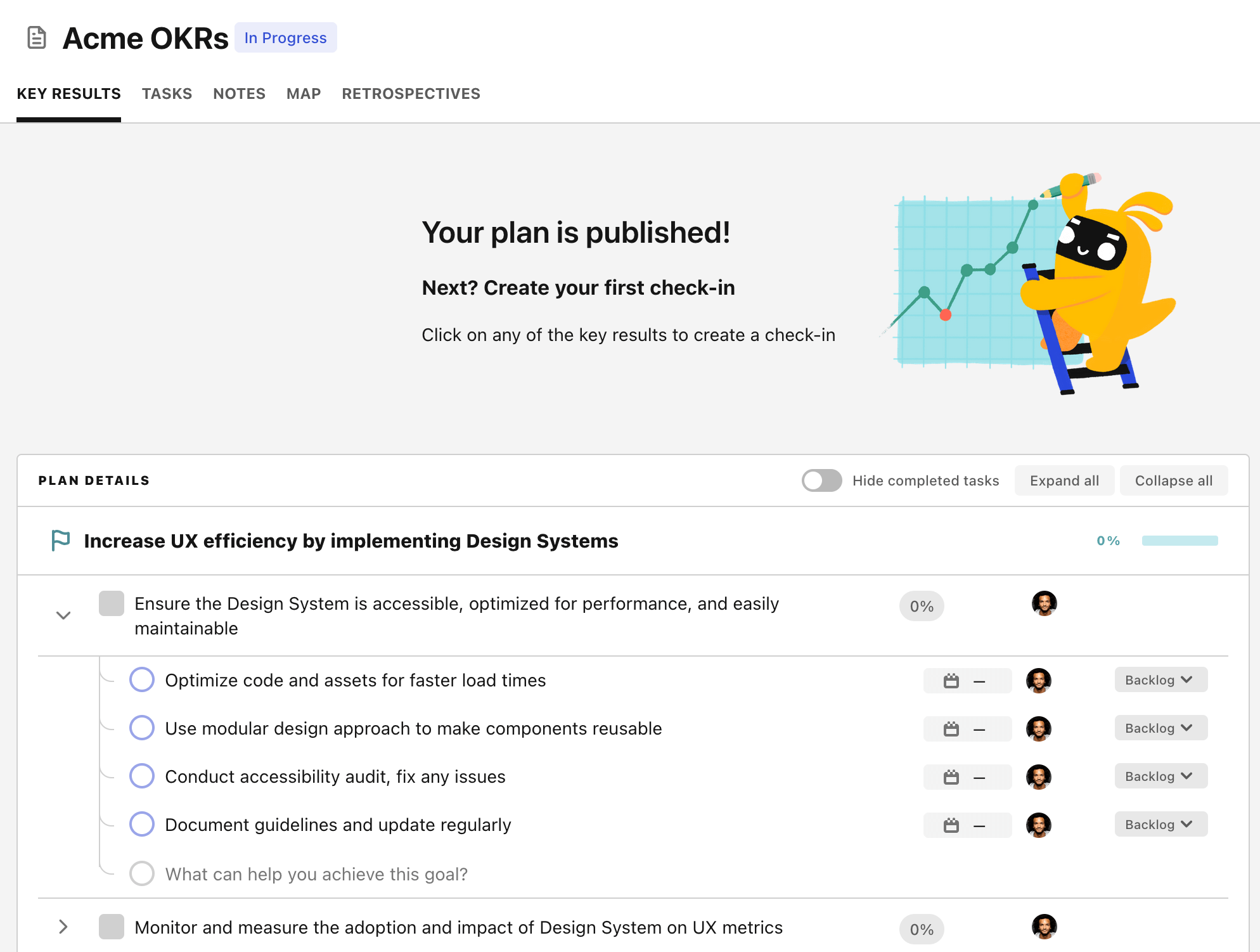OKR template to establish comprehensive SOPs in five distinct areas
Your OKR template
The sub-objectives start with identifying necessary processes in each area for SOP creation within week two. This helps set the groundwork for the SOPs, including setting deadlines, defining areas that require SOPs, and listing out all required processes for each area.
Secondly, initial drafts of the SOPs for all areas will be created, followed by an iterative process to incorporate feedback and improvements received from various teams. The drafts will be sent to the respective teams for review and then revised accordingly, hence fostering a sense of team involvement in the process.
The overall goal of this OKR is to maximize the operational efficiency and standardized work process across different areas of the business, thereby leading towards achieving overall business objectives at a high efficiency and effectiveness rate.
ObjectiveEstablish comprehensive SOPs in five distinct areas
KRFinalize and implement all SOPs, achieving 90% adherence in first month
Review and finalize all Standard Operating Procedures (SOPs)
Monitor and assess adherence to SOPs
Distribute the finalized SOPs to all relevant parties
KRIdentify requisite processes for SOP creation in each area by week two
Schedule deadlines within week two
Define all areas requiring SOP creation
List all requisite processes for each area
KRDraft initial SOPs for all areas, extracting feedback and improvements
Send SOPs to teams for feedback
Create first drafts of SOPs for all departments
Incorporate team feedback for SOP improvements
How to edit and track OKRs with Tability
You'll probably want to edit the examples in this post, and Tability is the perfect tool for it.
Tability is an AI-powered platform that helps teams set better goals, monitor execution, and get help to achieve their objectives faster.
With Tability you can:
- Use AI to draft a complete set of OKRs in seconds
- Connect your OKRs and team goals to your project
- Automate reporting with integrations and built-in dashboard
Instead of having to copy the content of the OKR examples in a doc or spreadsheet, you can use Tability’s magic importer to start using any of the examples in this page.
The import process can be done in seconds, allowing you to edit OKRs directly in a platform that knows how to manage and track goals.
Step 1. Sign up for a free Tability account
Go tohttps://tability.app/signup and create your account (it's free!)
Step 2. Create a plan
Follow the steps after your onboarding to create your first plan, you should get to a page that looks like the picture below.

Step 3. Use the magic importer
Click on Use magic import to open up the Magic Import modal.
Now, go back to the OKR examples, and click on Copy on the example that you’d like to use.

Paste the content in the text import section. Don’t worry about the formatting, Tability’s AI will be able to parse it!

Now, just click on Import from text and let the magic happen.

Once your example is in the plan editor, you will be able to:
- Edit the objectives, key results, and tasks
- Click on the target 0 → 100% to set better target
- Use the tips and the AI to refine your goals
Step 4. Publish your plan
Once you’re done editing, you can publish your plan to switch to the goal-tracking mode.

From there you will have access to all the features that will help you and your team save hours with OKR reporting.
- 10+ built-in dashboards to visualise progress on your goals
- Weekly reminders, data connectors, and smart notifications
- 9 views to map OKRs to strategic projects
- Strategy map to align teams at scale